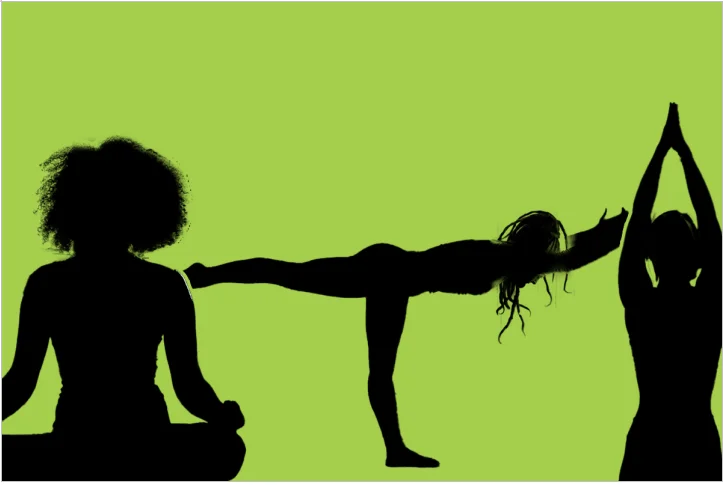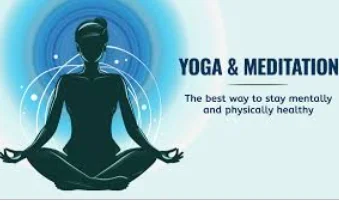
Milton Bain, IOCL
bainm@indianoil.in

Abstract
Yoga and meditation are two practices that have been used for thousands of years to promote physical, mental, and spiritual well-being. Although there are some similarities between the two, they are fundamentally different practices with distinct aims and methods.
Let’s start with Yoga.
Yoga is a physical, mental, and spiritual discipline that originated in ancient India. The word “yoga” comes from the Sanskrit word “yuj” which means to yoke or unite. The goal of yoga is to bring together the mind, body, and spirit to achieve a state of harmony and balance.

Yoga involves a series of physical postures (asanas), breathing techniques (pranayama), and meditation practices. The physical postures are designed to stretch and strengthen the body, improve flexibility and balance, and stimulate the internal organs. The breathing techniques are used to increase vitality and relaxation, and to balance the flow of energy in the body. The meditation practices are used to quiet the mind and cultivate inner awareness and stillness.
Let’s understand meditation:
There are several different types of yoga, each with its own unique approach and philosophy. Some of the most popular types of yoga include Hatha, Vinyasa, Bikram, Ashtanga, and Kundalini. While each of these styles has its own emphasis and approach, they all share a common goal of promoting physical and mental well-being.
Let’s understand meditation:

Meditation is a mental practice that involves training the mind to focus and quiet the constant stream of thoughts and emotions that can cause stress, anxiety, and other mental and emotional disturbances. The goal of meditation is to cultivate a sense of inner peace, clarity, and wisdom.

Meditation can take many different forms, but most practices involve focusing the mind on a particular object, such as the breath, a sound, or an image. The aim of this focus is to create a sense of concentration and relaxation, which can lead to a state of deep calm and inner awareness. With regular practice, meditation can help reduce stress and anxiety, improve concentration and mental clarity, and cultivate a greater sense of compassion and wisdom.
The key difference between yoga and meditation is that yoga is primarily a physical practice, while meditation is a mental practice. While yoga can help improve mental and emotional well-being through its physical postures and breathing techniques, the focus is primarily on the body. In contrast, meditation is focused solely on the mind and aims to cultivate mental and emotional well-being through a variety of mental techniques and practices.
Finally, lets solve “If Yoga = Meditation”:

In summary, while both yoga and meditation are
ancient practices that promote physical, mental, and spiritual well-being, they differ in their aims and methods. Yoga primarily focuses on physical postures and breathing techniques to improve the body, while meditation is primarily a mental practice that aims to quiet the mind and cultivate inner awareness and stillness. Both practices can complement each other, however, and when used together can create a powerful tool for achieving overall health and well-being.
Eat healthy, Stay healthy, Think Healthy.
Posted in Health & Wellbeing | No Comments »
Recent Articles
- Navigating Leaves: Balancing Connectivity and Breaks in Today’s Workplace
- Boost Your Productivity with the Pomodoro Technique
- The Busy Professional’s Guide to Self Care
- Mental Health @ Work
- Mental Health and Well-being
- Positivity: Why you should make a New Year’s Resolution
- Get To Know About Nomophobia
- Fuelling Health: Energy of Our Body
- Keep Running
- Is Living Alone a Curse or a Boon? No, It is an Art
- Living with Meaning: Workplace Spirituality, Mindfulness, and Purpose
- Delivering Happiness during Pandemic
- HUMRAHEE: We are in This Together
- CHETNA: Personal Connect during COVID 19
- Ecosystem Restoration @ BPCL
- Leading the Way: HR Initiatives during Pandemic
- Living with the Invisibile
- Resurrection
- Health and wellness- From benefits to necessity
- Personal Strategies to Improve Well-being-CALM ki baaten
- Sustainability as Competitive Advantage
- Cold Feet Before the Meeting! Does it Sound Familiar
- 9 Common Workout myths debunked
- Positive Psychology – Mantra of Well-being
- Human Resource Development Through Sports At Workplace
- Nature Heals_How to boost your brain power with nature
- Success Story of Waste Segregation
- Occupational Health & Safety Bulletin on : Managing MSDs (Musculoskeletal Disorder)
- Gratitude: The Game Changer Antidote to All The Dis-eases
- Effective Time Management
- Watch out and act now Prioritizing Mental Health at Work
- Pursuing a Passion Outside of Work for mental wellness
- Prioritizing Mental Health at Work
- Health or Help – what will you prioritize?
- Digital Wellbeing – Way towards Mental Health
- Love yourself the way you want others to
- Kissa Kursi Ka
- Atychiphobia: Understanding the fear of failure
- Is Yoga = Meditation? Let’s solve it
- Overcoming Failure
- From Surviving to Thriving: Building a Culture of Employee Well-being
- Solid Waste Management -A dire necessity
- Sleep health: The cornerstone of Wellbeing
- Miracle of Stress
- Health & Wellbeing in the Organization
